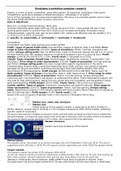Class notes
2021 BTEC BUSINESS LEVEL 3 - Developing a Marketing Campaign, 6 pages Notes - Distinction level - Template notes
- Course
- Institution
BTEC BUSINESS LEVEL 3- unit 2 - Developing a Marketing Campaign on TEAM OCCUPOLA E-SPORTS TEAM. This Document has Thorough research on Esports and granted me a distinction
[Show more]



